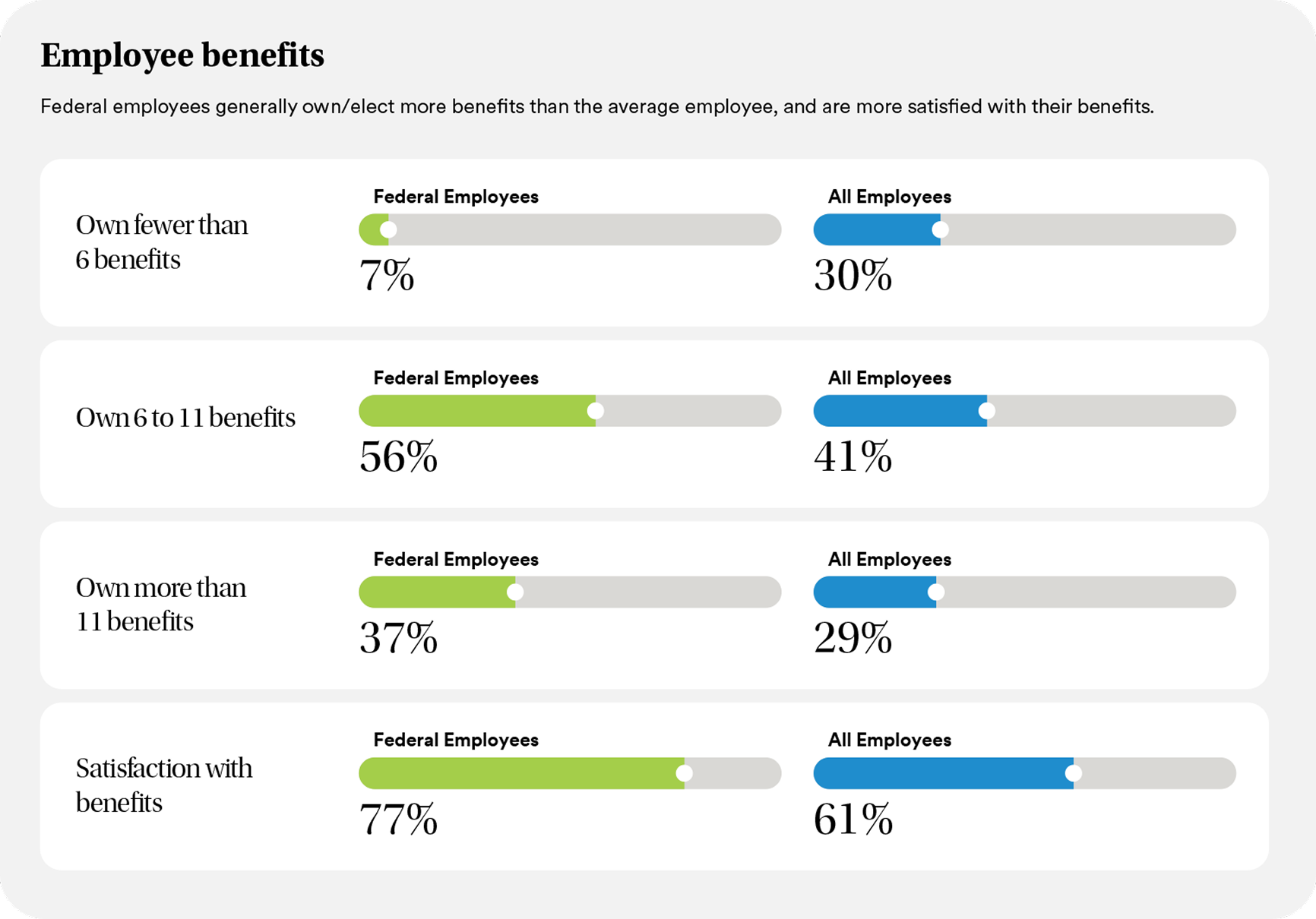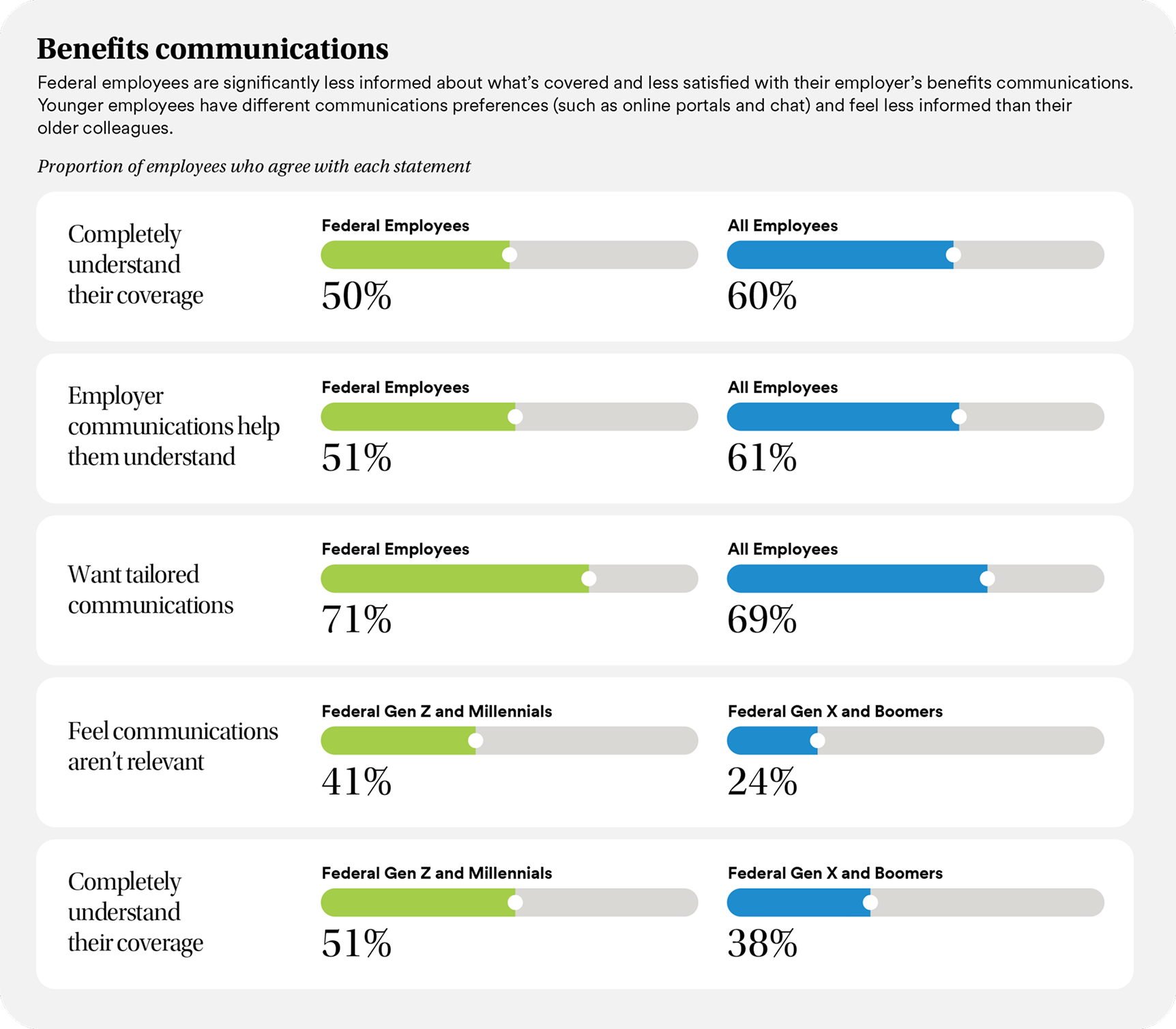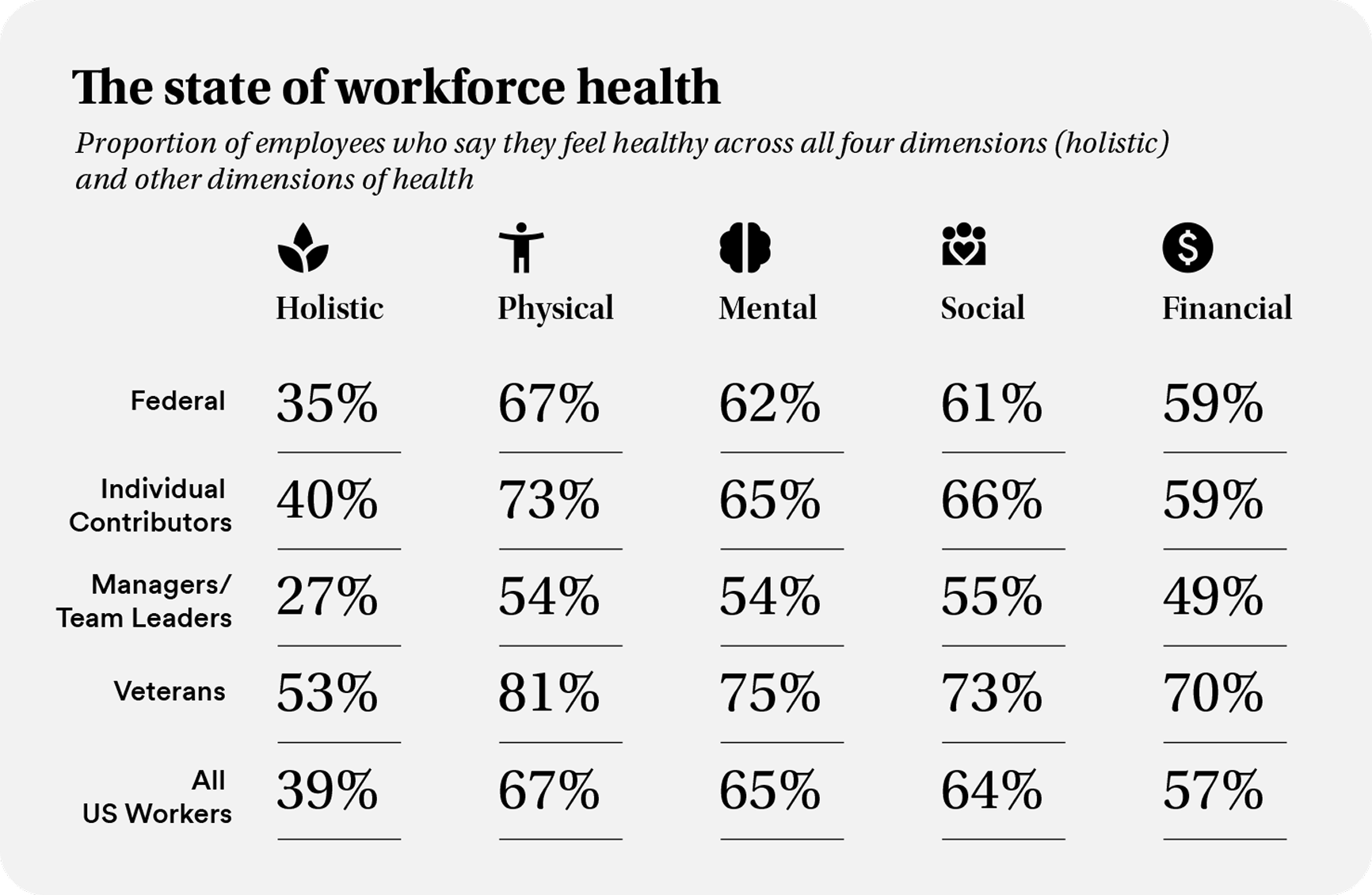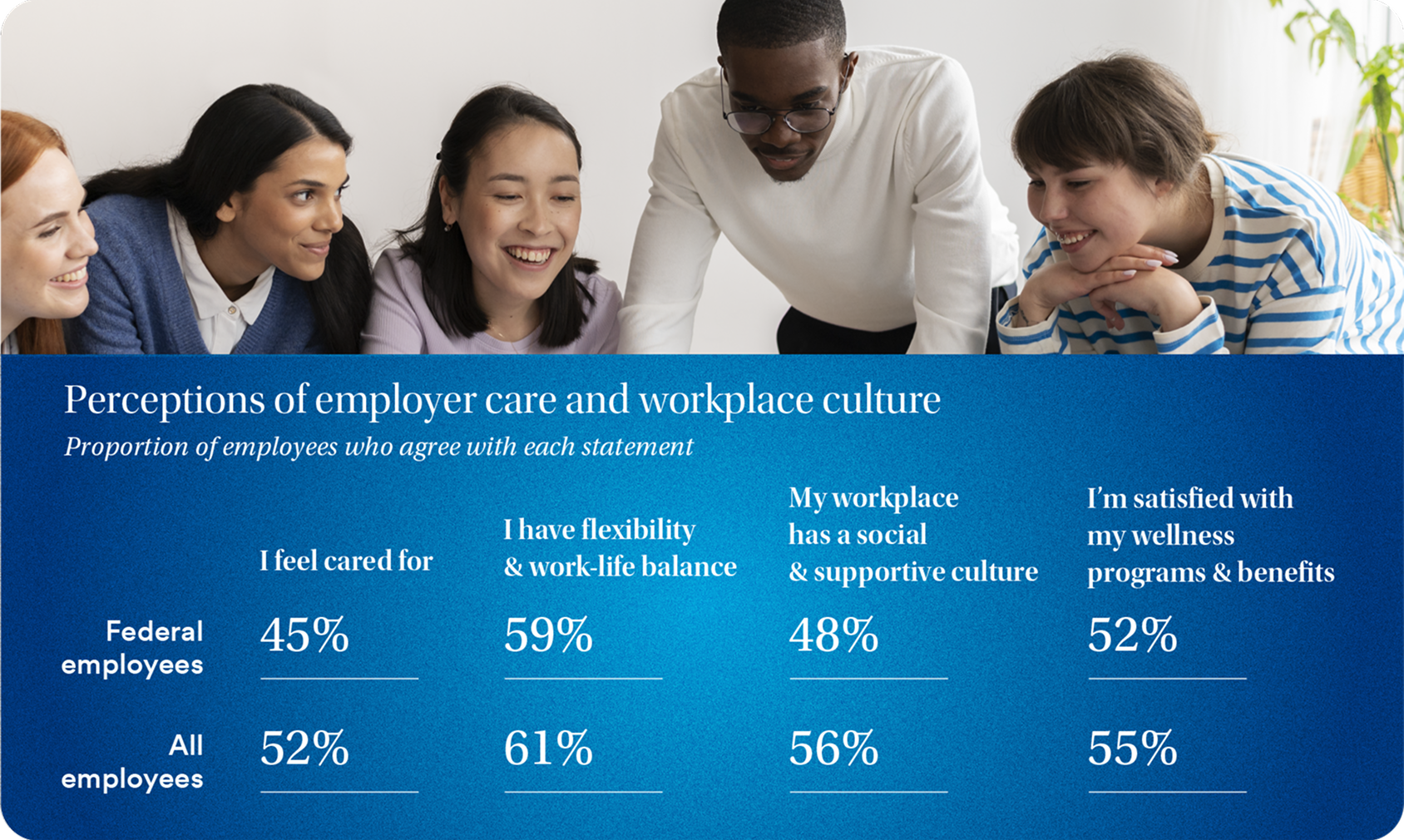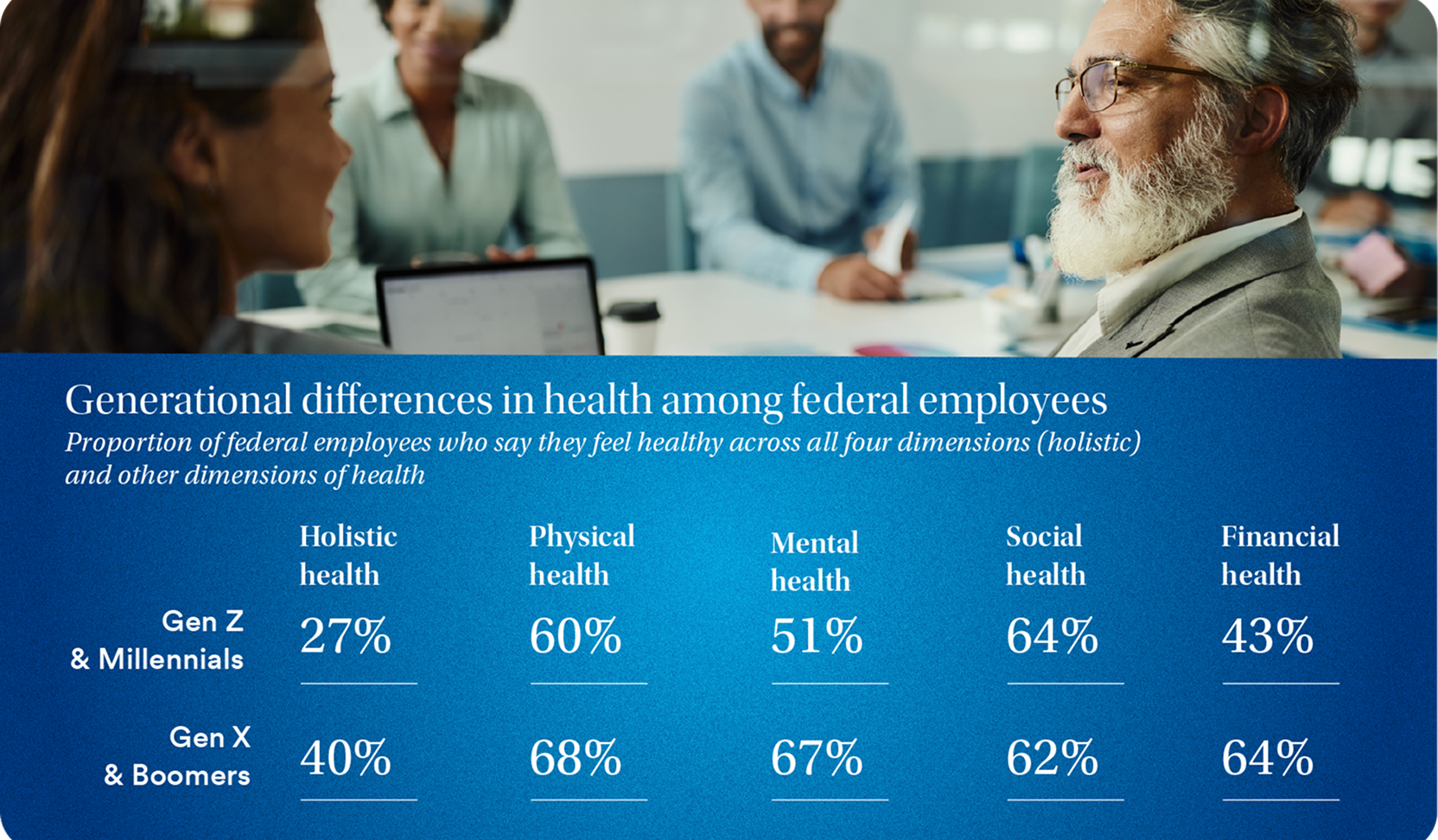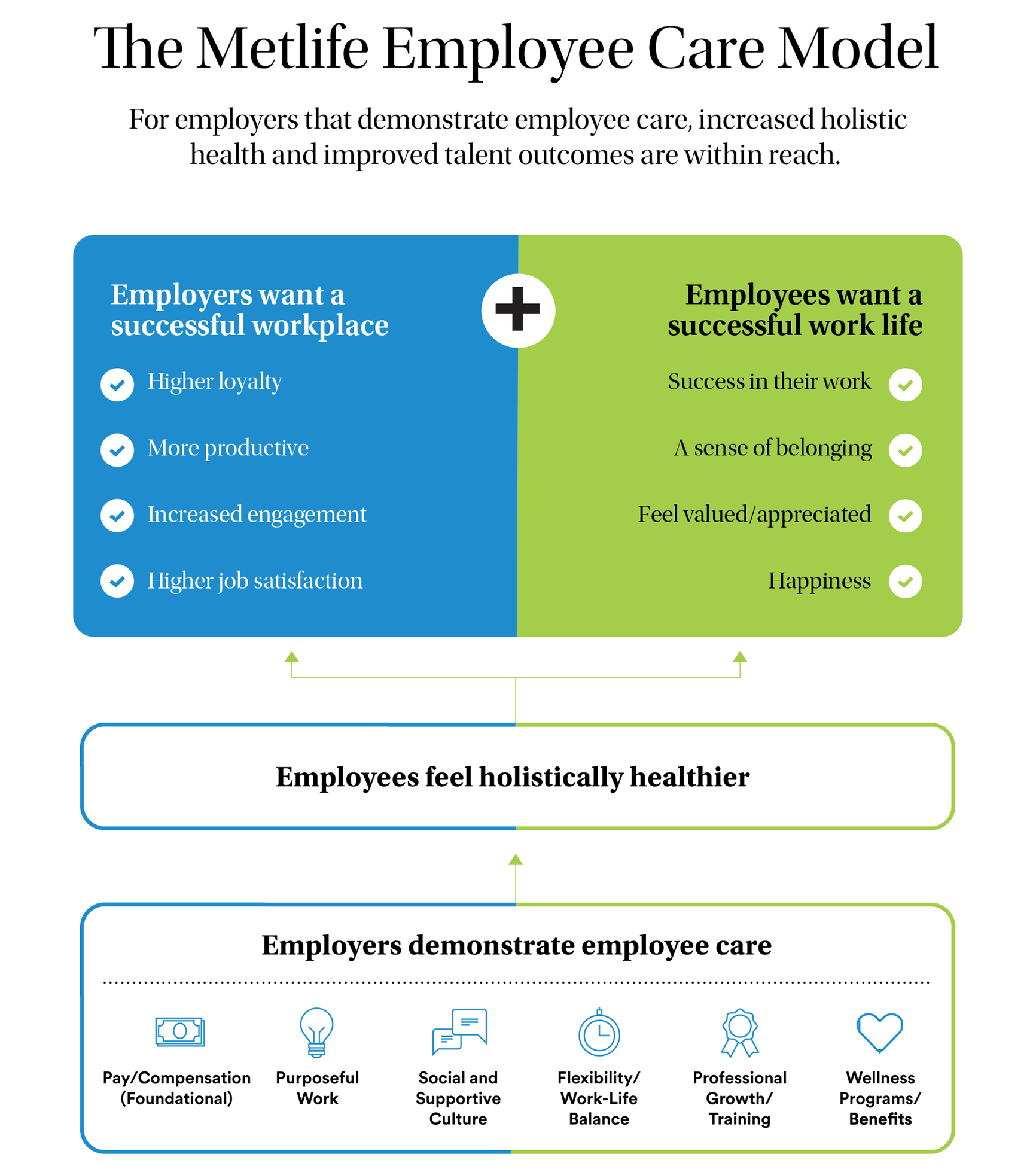THE WHOLE EMPLOYEE
MetLife’s Employee Benefit Trends Study (EBTS*) is the longest-running study of its kind, tracking how employees think and feel about their benefits and what they expect from their employers. By taking a deep dive into the data gathered from the federal sector in this study, we can better understand the role benefits play in supporting federal employee success and in turn, the federal government.
Federal employees include workers in the executive, legislative and judicial branches across a wide range of agencies and departments. With just over 3 million people, federal employees represent about 1.9% of the total U.S. workforce, making the government the nation’s 15th-largest employer. The perceptions and feelings of this workforce therefore represent a significant reflection of the overall employee experience in the country.
The study also explored broader patterns: how employees feel about their overall well-being and how much care they believe they receive from their employer. It sought to measure holistic health — across physical, mental, social, and financial dimensions — and explored the concept of care as a factor that both strengthens the holistic health of employees and increases employees’ trust in their employers. The study revealed that employees and employers don’t always see eye-to-eye on how much care is being shown, and federal workers say they expect care to stretch into both their work and personal lives. Despite some concerns, federal employees remain deeply committed to their mission. Most plan to stay put over the coming year, driven by a sense of purpose in their work.
According to MetLife's research, employees in the public sector (i.e., government and public education) are often driven by a sense of mission and the government's reliable, comprehensive benefits packages. For instance, compared to other workers, federal employees often receive a wider range of benefits, which leaves them more satisfied overall.
That said, the study reveals a distinction between the benefits offered and how clearly they are communicated. Since the federal workforce spans multiple generations, educational levels, and types of occupations, it’s no surprise that communication styles and preferences vary.
Here are four key observations we took from the study.
- Holistic health is a concern for federal employees. Federal employees tend to score lower than non-federal employees (referred to in the charts below as “All”) on overall well-being, especially on mental and social health. While federal employees’ current financial situation looks steadier than many others, they’re worried about hardships ahead. Nearly one in three feel less optimistic about their future than they did a year ago, due to factors such as rising medical costs (cited by 72% of respondents), political polarization (65%) and economic uncertainty (61%).
Financial worries (38%), struggles with work-life balance (34%), and workplace changes such as new leadership (30%) are the top drivers of stress. On a larger scale, concerns about rising medical costs (72%), political division (65%), and economic uncertainty (61%) loom large.
- Purpose runs deep, but organizational culture feels lacking. Federal employees are among the nation’s most mission-driven. Yet when it comes to their workplace culture, they see much room for improvement—especially around transparency, open communication, and genuine connection. For example, when asked what would help most, employees pointed to open and honest communication (56%), recognition for good work (47%), and employers keeping their promises (46%).
- Trust and care remain sticking points. Federal employees are less likely than other employees to feel cared for or to trust their employer. That said, they also hold their employers to a higher standard—nearly 8 in 10 believe their organization has a responsibility to show care, compared to about two-thirds of the overall workforce.
- Younger workers are struggling more. As new generations enter federal service, their expectations are different—and many feel let down. Younger employees and newer team leaders often say the culture isn’t supportive enough. On top of that, Gen Z and Millennial government workers are 11% less satisfied with their benefits than older colleagues.
Looking ahead
The findings point to clear opportunities for employers to strengthen both employee well-being and retention:
- Offering benefits that are easy to enroll in, and providing support for their ongoing utilization so employees can make the most of them
- Communicating all available benefits and perks more clearly (for example, identity and fraud protection, discounts on pet insurance and legal coverage, and student loan assistance)
- Building trust through transparency and supportive workplace cultures
Lastly, the importance of actively demonstrating care can’t be overstated. The MetLife Care Model, shown below, illustrates how employers (including those in the federal sector) that demonstrate care and build trust across the employee experience can increase holistic health and improve talent outcomes. The employee experience includes pay and compensation, purposeful work, social and supportive culture, flexibility and work-life balance, professional growth and training, and wellness programs and benefits. These elements are critical to holistic health: when employees are satisfied across these elements, they are almost six times more likely to be holistically healthy than those satisfied with none.

